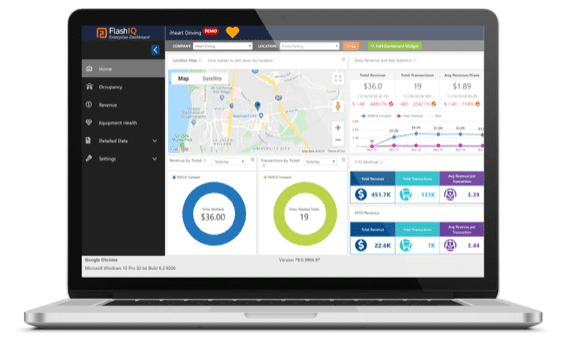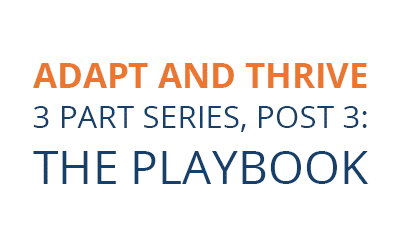A concise, three-part series exploring the imperatives to success in a crisis, the future of mobility and the smart city with parking at the epicenter, and the practical steps we can take now to make that future possible.
Part I: The Framework | Part II: The Vision | Part III: The Playbook
PART III: THE PLAYBOOK
To recap… A bold vision for the future has been established. We know that success will require a powerful combination of selective defense and comprehensive offense. And we know that our adaptations to change will take behavioral, structural, and physiological forms.
To bring them to life, we need a playbook. Based on the past experience of our leadership team, analysis of success outside of parking, and a macro view of our industry today, there are five key areas for focus and action:
1. VERSATILITY
To adapt, in or out of crisis, a business must be versatile. This is our first offensive move. If a business sells a single good or service and demand drops, there’s very little adaptation that can be made in the short–term. Fortunately, parking infrastructure is some of the most versatile real estate imaginable, with usage potential loosely defined by painted lines. This is parking’s market development. Opportunities and needs include:
- Transportation (e.g., staging of rideshares or docking of last-mile solutions like eScooters and eBikes)
- Services (e.g. fleet management, EV charging, cleaning)
- Logistics (e.g. pickups and delivery, locker access)
Parking needs a technology layer that can monetize these new types of transactions, delivered by a partner forging diverse relationships in the mobility ecosystem.
Example: Add Staging for Ridesharing, like Uber
Uber drivers in the City of Las Vegas can gain access to two city-owned garages by registering and verifying their status as a driver through their smartphone. Upon verification, drivers can download the FlashParking app, which provides frictionless access during specified hours through Bluetooth or with a digital barcode in the app.
2. AGILITY
How many people would buy a Tesla if, every time there was a software upgrade, a technician had to be dispatched to the vehicle to install it? The answer is “very few.” How does parking emulate Tesla’s success? By making our second offensive move, investing in agility.
- Jettison costly and unreliable on-premise servers.
- Leverage solutions built for the cloud, not retrofitted to the cloud.
- Use “over-the-air” updates to quickly add functionality where opportunities exist.
3. MEASURABILITY
Hewlett Packard Enterprise President Antonio Neri said that ‘data is the new currency.’ He was right. Business intelligence that delivers meaningful insights can guide offense (strategic market development) and inform defense (improved operational efficiency).
- Connect parking assets on a single platform for portfolio-wide visibility
- Assess revenue, occupancy, equipment health, and other offerings (versatility) in real-time
- Extract insights with custom dashboards for different roles and responsibilities
- Identify and take action on geographic needs and localized opportunities.
Subscribe to our newsletter to learn about the launch of FlashIQ, our business intelligence engine.

4. SECURITY
Simply put, crises expose vulnerabilities. Phishing scams started circulating in January, preying on fear and confusion, and have proliferated since. As parking becomes increasingly digital, integrations expand, and ecosystem extensions evolve, cybersecurity will emerge as perhaps the biggest vulnerability. Defense starts here.
- Managed PCI compliance is a minimum requirement
- Turn to solutions on cloud platforms trusted by Fortune 500 companies, like Microsoft Azure that invest upwards of $1 billion per year in security to protect customers’ data from cyberthreats.
5. LIQUIDITY
Perhaps the biggest and most important question on all of the above is, ‘how do we pay for it?’ How do we break a cycle of obsolescence so we’re not standing here in seven years’ time with outdated infrastructure, rendered obsolete by Moore’s Law? The answer requires us to redefine purchasing in parking.
- Zero capital.
- No long-term contract.
- Monthly payments.
- Lifetime hardware warranty.
CLOSING
None of this is easy. These aren’t quick fixes, nor will they allow leaders to avoid other difficult decisions. And whether we’re witnessing a ‘tipping point’ or not, change isn’t new. And so, we must adapt. The only difference here is that we can adapt to create a future that we have imagined.
That’s how parking wins. By building for tomorrow, today.
+++
To receive a copy of “Adapt & Thrive: How Parking Wins by Building for Tomorrow, Today” in its entirety — Click the button below.

